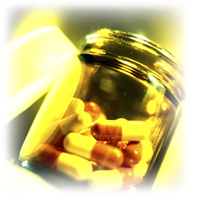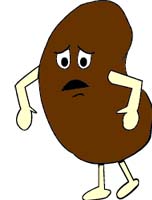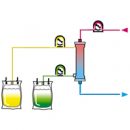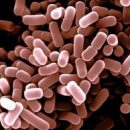Acute renal failure is a difficult state that arises as a result of reducing the renal function and impaired water and electrolyte balance. There are many reasons for acute renal failure, among them malaria, yellow fever, various drugs.
Content
Acute renal failure - clinical syndrome, characterized by a rapidly developing reducing the renal function, which is manifested by changes in blood (uremia), impaired water and electrolyte balance and acidic condition of the body. Acute renal failure is a reversible, since the kidneys have a high regenerator capacity.
Forms of acute renal failure
 The following forms of acute renal failure are distinguished:
The following forms of acute renal failure are distinguished:
- Preenal
- Renal
- Primary
- Secondary
- Scheduled
Most often acute renal failure in infectious pathology is determined by preen. A sharp disruption of the renal blood flow at shock leads to the spa of the renal vessels.
To the renal form of acute renal failure without pronounced shock phenomena, hemorrhagic fever with renal syndrome is carried out; yellow fever; malaria; leptospirosis; Nephrotoxic medicines (Canamycin, gentamicin, hemodhetum).
Toxin formed during the disintegration of the pathogen, causes a disruption of renal capillaries, which contributes to increasing their permeability. This causes a disruption of microcirculation and kidney damage.
Stages of acute renal failure
Start stage (lasts from several hours to several days). The clinical picture corresponds to the main disease. At the same time, the volume of urine released and increasing nitrogen concentration in the urine is reduced.
 Oliganuric stage (lasts 7-8 days). This stage has to maximal mortality. Appearance: dry mouth, thirst, general weakness, lethargy, drowsiness, headache, nausea, vomiting, diarrhea, skin itch. Laboratory changes reveal an increase in blood nitrogen levels, electrolyte imbalance, disruption of acid-base state. With an increase in the concentration of nitrogen in the blood, especially severe conditions arise:
Oliganuric stage (lasts 7-8 days). This stage has to maximal mortality. Appearance: dry mouth, thirst, general weakness, lethargy, drowsiness, headache, nausea, vomiting, diarrhea, skin itch. Laboratory changes reveal an increase in blood nitrogen levels, electrolyte imbalance, disruption of acid-base state. With an increase in the concentration of nitrogen in the blood, especially severe conditions arise:
- Defeat of the central nervous system (stubborn Icota, convulsions, sharp psychosis, coma)
- Defeating the gastrointestinal tract (vomiting, diarrhea, intestinal obstruction)
- Defeat of the cardiovascular system (arrhythmia, ventricular fibrillation, pericarditis)
- Defeat of the respiratory system (progressive shortness of breath)
- Gastrointestinal bleeding
- Anemia
Stage of recovery of diurea (lasts until the normalization of the diurea is 7-0 days).
Initial recovery period (first 3-4 days). The patient highlights 1.5-2 liters of urine per day. During this period, the concentration of nitrogen in the blood may increase due to insignificant increase.
In the Phase polyuria, diuresis increases to 2-3 liters per day and more, the concentration of nitrogen in the blood decreases into this stage. But this phase is in danger. Slow restoration of the structure of the kidneys does not provide the necessary process of urinary, which can lead to dehydration and decrease in potassium concentration. Reducing the concentration of nitrogen begins only 3-4 days after the start of restoration of normal urea.
Stage of recovery - complete elimination of acute renal failure.
Treatment of acute renal failure
Prevention of acute renal failure is one of the most important tasks of therapy of severe infectious disease and is achieved in most cases by restoration of hemodynamics. Recognition and elimination of dehydration allows you to correctly assess the absence or lack of urinations. Until liquid deficit, massive therapy can only worsen the patient's condition.









